Oyster growers must share their sweet spot with endangered shorebirds and ancient horseshoe crabs
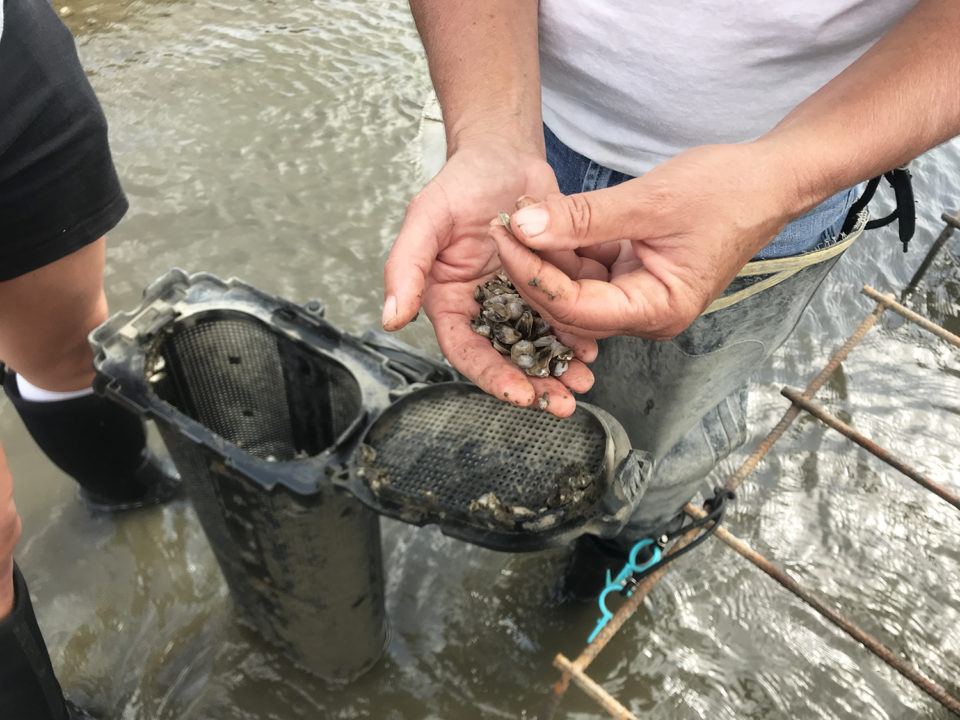
At low tide on the mudflats of Delaware Bay, oyster grower Lisa Calvo carefully selects a deep-cupped Eastern oyster (Crassostrea virginica) from a mesh bag. She twists her shucking knife beneath its rough, bumpy shell to reveal a creamy, salty, fresh-as-can-be oyster that’s been plumped on the nutrient-rich waters of the tidal Delaware River.
That small, delicious morsel represents the fruit of two years of labor, the time it takes to grow an oyster from seed to market size. Calvo and her fellow farmers here face an increasingly complicated regulatory environment, and in an ecosystem critical to the survival of threatened rufa red knot migratory shorebirds — that fly from one end of the earth to the other — and the ancient horseshoe crabs that fuel their journey.
All of it unfolding in a fast-changing, global climate.
Relocation and innovation
Calvo, a shellfish scientist who started her Sweet Amalia Oyster Farm in 2012, this spring scrambled to move her farm from a “perfect” spot up the bay that’s also in a section of the bay preferred by red knots. She’s trying to make it work in the new location, she said, and secure access to the best-possible leased spot, one that will impart unique flavors — known as merroir, the marine version of terroir — for her boutique oysters. She starts with small spat that represent decades of Rutgers University research toward a disease-resistant Eastern oyster built to thrive in Delaware Bay.
Calvo secures the oysters in plastic mesh bags lying on metal racks supported by rebar frames. As they work the tides in May, growers must be careful to avoid harming or disturbing red knots and the horseshoe crabs the birds rely upon to survive their flight.
Just before high tide during May, peaking with the full moon, thousands of horseshoe crabs march out of the water onto the beach, lay their eggs and return to the sea. Many species of migratory shorebirds feast on fatty, glistening green eggs the size of pinheads.
Between 50 to 80 percent of the world’s rufa red knots converge on Delaware Bay every May. Their extended stay on the bay is timed with the spring spawning of horseshoe crabs — the largest concentration of which is also found right here.
“Delaware Bay is far and away the single-most important staging area for [rufa] red knots,” said Wendy Walsh, a biologist with the U.S. Fish and Wildlife Service’s New Jersey office. Walsh has worked on the consultation required by the ESA for the Army Corps of Engineers aquaculture permitting process.
“[Red knots] are really fueling up on food and trying to lay on a lot of body fat to make that journey,” said Walsh. Most of the rufa red knots have flown 7,500 miles from Tierra del Fuego at the tip of South America. They will fly 2,000 more miles in the next few weeks to reach their summer nesting grounds in the Arctic.
“No matter where they go, no matter how many new homes they might seek, red knots can’t escape the effects of global warming,” wrote Deborah Cramer in the May-June 2016 issue of Audubon magazine. The author of the book, “The Narrow Edge. A Tiny Bird, Ancient Crab & an Epic Journey,” adds that all along their migration, the birds face threats from rising seas, acidic seas inhibiting growth of the shellfish they eat and the shrinking of their Arctic nesting grounds.
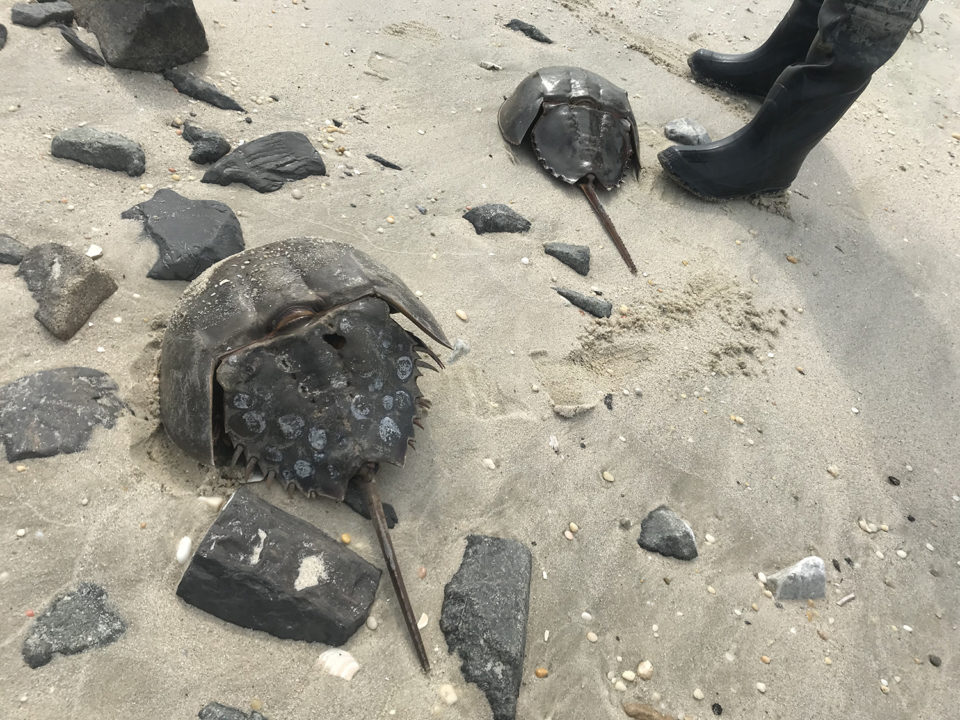
Tough but vulnerable
Horseshoe crabs, for their part, are just as remarkable. The arthropods date back 445 million years, according to the National Oceanic and Atmospheric Administration. They are not a food source for humans, but biomedical and pharmaceutical companies use their blue blood to test for the presence of bacteria. Horseshoe crab fishery management allows for biomedical companies to harvest, bleed and release the crabs — although 10 to 15 percent die in the process — and allows their harvest for bait for the commercial American eel and conch fisheries.
These crabs are tough, but can they figure out how to get around the oyster gear in the mudflats?
That’s important because the most controversial conservation measure to protect the birds is aimed at ensuring oyster gear does not block the passage of horseshoe crabs and would require growers to raise the legs of their racks from the general practice of eight inches to 14 inches in spring 2022. Growers successfully argued for a delay a few years ago since there was no science supporting a higher rack height.
Growers prefer to control the rack height. The higher the racks, the less time oysters can feed and filter.
Aside from the cost of purchasing all new racks, the bay’s winter ice mangles the racks, adding to the hassle, said Brian Harman, general manager of Cape May Salt Oyster Farm, the largest oyster grower in Delaware Bay..
His farm has converted 800 racks — about 80 percent — to the 14-inch size. Calvo also switched to the higher racks.
Much more physical labor is required to either remove or push the racks down before winter and either re-install or pull them up in the spring. Last year, the winter ice destroyed about 100 of Harman’s racks. So Harman hopes the change in rack height will not take effect.
When officials re-visit the measure, they will have a new study to consider.
Daphne Munroe, a marine ecologist and Rutgers University associate professor, collected and analyzed sonar and survey data in 2016, 2018 and 2019 to study how horseshoe crabs function in Delaware Bay with and without disturbance from oyster farms.
“Rarely in ecology ever does everything agree in such a clear way,” said Munroe. “Everything agrees and everything has been consistent from one year to the next. Crabs do not notice the farms whatsoever.”
They navigate the oyster gear — with rack heights at their eight-inch levels —and access the beaches to spawn, said Munroe, the lead author on a paper about the study published in June 2017 in Aquaculture Environment Interactions.
In mid-August, at the height of the summer tourist season, the beach outside the Rutgers Haskin field station at the end of a long, unmarked road, was empty except for a few shells of dead horseshoe crabs and a few oyster farm workers on the mudflats.
Rarely in ecology ever does everything agree in such a clear way. Everything agrees and everything has been consistent from one year to the next. Crabs do not notice the farms whatsoever.
This is the quiet, western side of New Jersey’s Cape May peninsula, away from the crowded boardwalks of Cape May, a bird-watching mecca, Ocean City and Atlantic City. The hard-to-reach beaches here are best-known among locals, growers and scientists at Rutgers University’s Haskin field station, one of four Haskin labs.
Harold Haskin, a Rutgers biology professor and marine mollusk expert, worked toward a better, more disease-resistant oyster following the demise of the shellfish industry in the 1950s due to overfishing, habitat destruction and the MSX parasite. Upriver, at the Haskin lab in Port Norris, Ximing Guo, a professor of molluscan genetics and aquaculture, invented the triploid oyster with an extra, third set of chromosomes that make it sterile and unable to breed with wild oysters.
(Editor’s note: Ximing Guo is one of two inventors of the triploid oyster. Guo and Standish K. Allen Jr. are named as inventors on the U.S. patent dated Oct. 20, 1998 of tetraploid mollusks, including oysters, and methods to produce them, according to patent U.S. Patent and Trademark Office documents).
Calvo grows diploids. Other growers, like Cape May Salt Oyster Farm, grow diploids and triploids.
Calvo, a researcher at the Haskin Shellfish Research Laboratory and part of Rutgers’ Extension effort, supported other growers as the local oyster-growing industry resurged. She first started on a lease close to the Rutgers field station in 2012, the same year that the state of New Jersey sited an Aquaculture Development Zone in Delaware Bay — to streamline permitting as a new chapter of oystering. Cape May Salt Oyster Farm started in 1997 and was the first farm of the modern rack-and-bag era to grow at commercial scale.
In 2012, “the red knot was already a candidate for federal listing and the state had an active program to monitor shorebirds,” said Walsh. “They had definitely taken that under advisement.”
The state agencies — including the Bureau of Shellfisheries — and federal agencies are all working together in the context of each other’s jurisdictions, said Walsh. The red knot listing triggered the consultation, programmatic biological opinion issued in April 2016 and conservation measures for structural aquaculture of native bivalves over a 10-year period along 6.5 miles of Delaware Bay shoreline.
“This one is extraordinarily complex,” said Walsh of this consultation process. “We have really good science about the density of red knots on Delaware Bay and good science about disturbance and good science about weight gain. And although we have really good science on horseshoe crabs, we did not have great science on their passage, how they make their way to shore and spawn.”
The biological opinion postponed the 14-inch leg height requirement until the spring following 2021, which is four years after a fall 2017 meeting of horseshoe crab experts.
During their stopover, the birds tend to concentrate in the northern end of the bay. The southern part, likewise, offers some advantages to oyster farming operations: a wider stretch of flats, and better beach access from roads.
“We didn’t want growers driving along the beach,” said Walsh. “Driving up and down the beach is going to introduce way more disturbance and rutting along the beach environment.”

‘I just want it to be based on science’
A strategy of concentrating oyster farming in the southern part of the bay emerged. Calvo’s farm and another operated on pre-existing permits in the northern part of the bay.
Then, it became clear that the red knots were being disturbed, said Walsh. The leaseholders had some protection for that disturbance until April 2019.
Had Calvo stayed without that protection, and the science kept mounting that disturbance was harming birds, “that would have left her and the Army Corps in the uncomfortable position of being in violation of the ESA. No one wanted that outcome. I know it was a difficult situation she was in,” said Walsh.
Calvo had hoped to work her previous site for one more year and hoped to work with officials and researchers on further studies of whether tending the farm was impacting birds. As it turned out, she needed to re-locate within a few weeks prior to the birds’ feeding frenzy. She’s still a bit “salty” about having to move in a few weeks’ time — and also trying to make her new location work.
“I just want it to be based on science,” said Calvo. The growing community has been very cooperative about new rules to protect the birds and crabs, she said, and the growers want to know the science behind the measures. “Is there a scientific basis? If not, why are we doing it?”
This fall, a stakeholder committee including growers, bird conservationists and all of the agencies will meet to review new information and seek consensus on potential changes to the conservation measures.
Walsh, asked whether oyster farming can co-exist with the threatened red knots and horseshoe crabs in Delaware Bay, answered “yes.”
“It’s hard to do anything in Delaware Bay without some impact given the concentration at that critical time period,” said Walsh. “The set of conservation measures really keeps that impact to the minimum and it’s nice that it’s able to adapt as things change.”
Follow the Advocate on Twitter @GAA_Advocate
Now that you've reached the end of the article ...
… please consider supporting GSA’s mission to advance responsible seafood practices through education, advocacy and third-party assurances. The Advocate aims to document the evolution of responsible seafood practices and share the expansive knowledge of our vast network of contributors.
By becoming a Global Seafood Alliance member, you’re ensuring that all of the pre-competitive work we do through member benefits, resources and events can continue. Individual membership costs just $50 a year.
Not a GSA member? Join us.
Author
-

Lisa Duchene
Lisa Duchene has reported on the marine environment since 1993. She is a business-environment writer, essayist and communications consultant in central Pennsylvania.
Tagged With
Related Posts
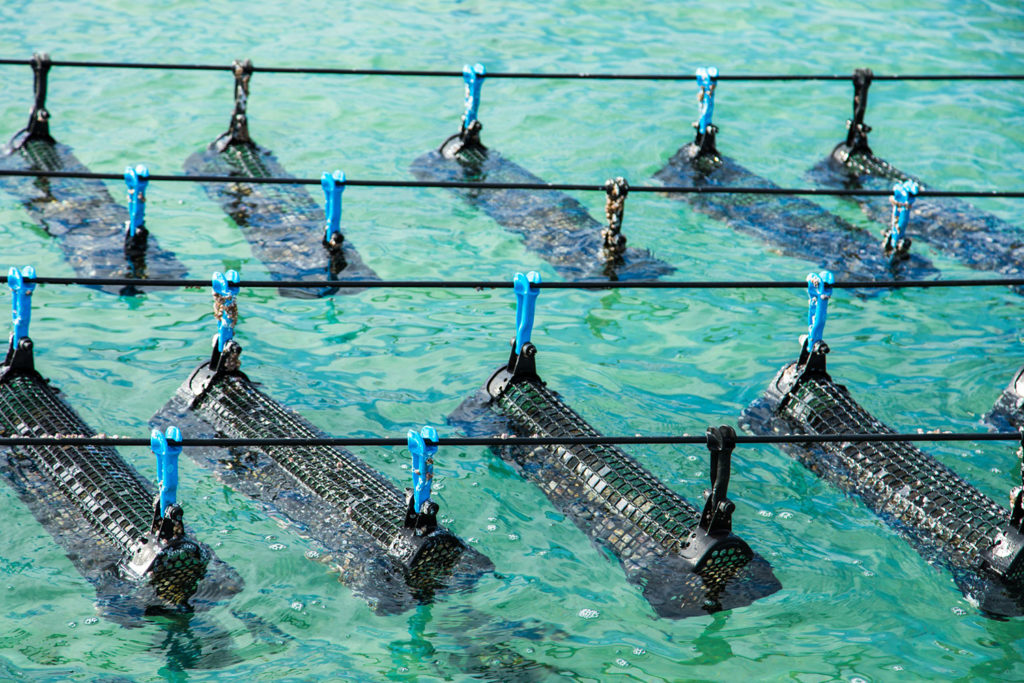
Responsibility
Advancing the ecosystem services of aquaculture
The Nature Conservancy was inactive in aquaculture until new program leader Robert Jones joined. His focus is on the positive outcomes of responsible aquaculture.
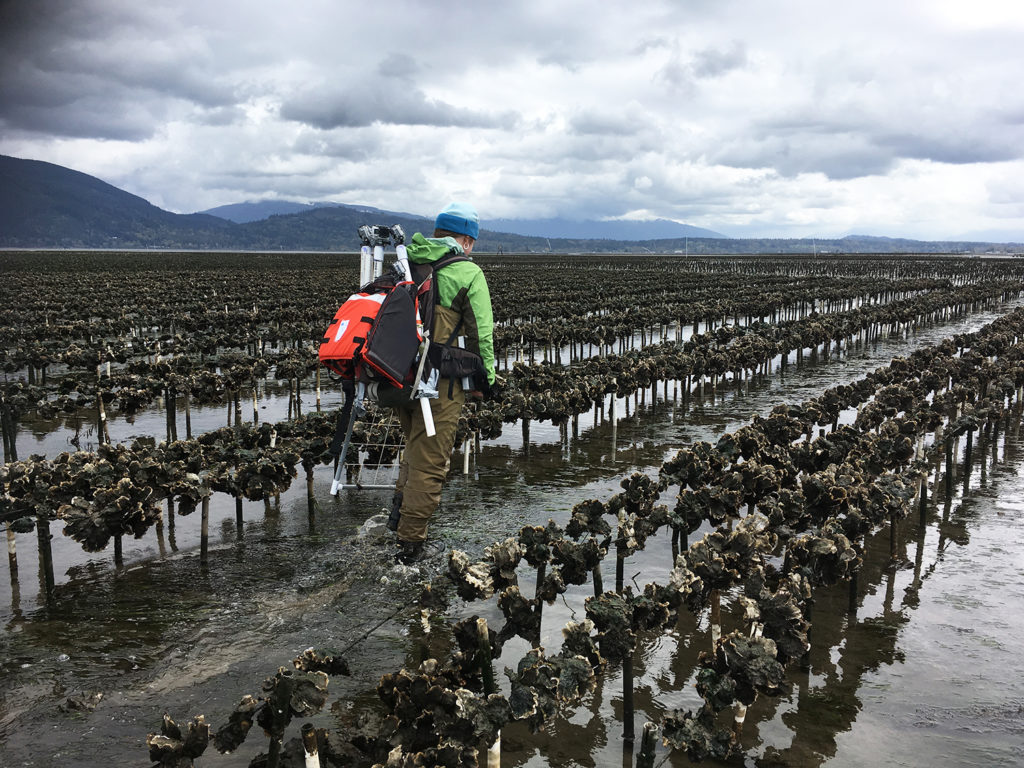
Responsibility
To protect sensitive habitat, oyster farms turn to high-tech tools
Drones and GoPro cameras are helping researchers, regulators and operators understand how shellfish farming interacts with sensitive habitats like eelgrass beds.
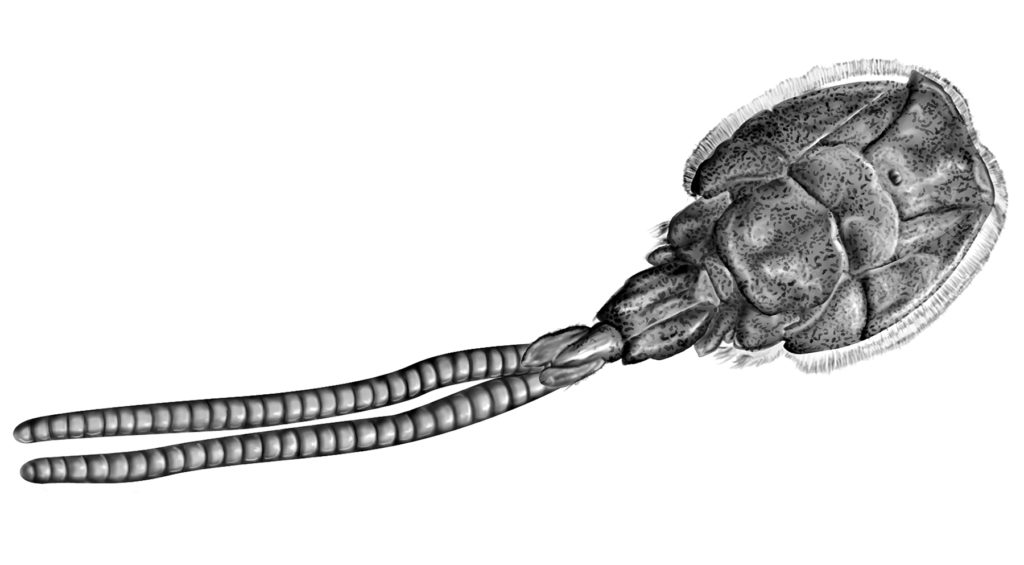
Health & Welfare
Animal health giants have sea lice in their crosshairs
Alltech and Benchmark have been working on the next generation of sea lice solutions and believe they have new products that can help salmon farmers win.
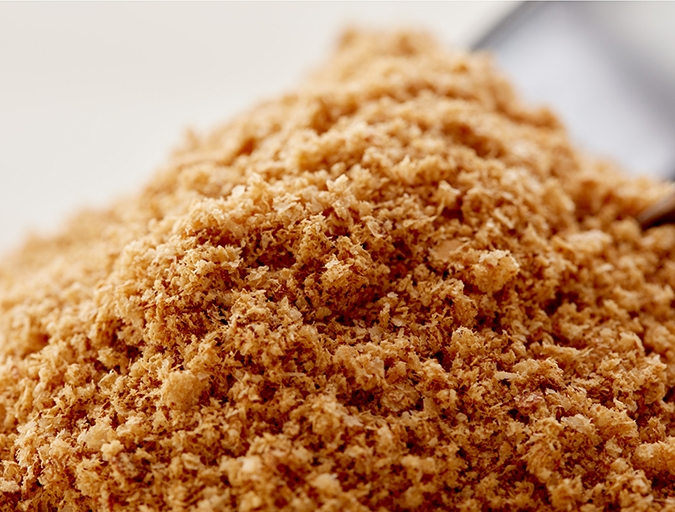
Aquafeeds
Bridging the omega-3 gap with methane, microalgae
Innovation is leading to new ingredient options for renewable sources of omega-3 fatty acids. But Replicating long chain fatty acids is a tall order, Advocate contributor Lisa Duchene discovered.


